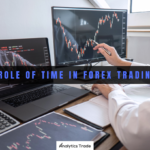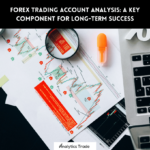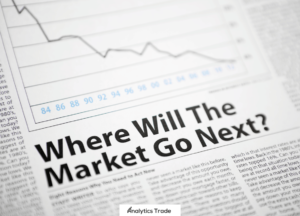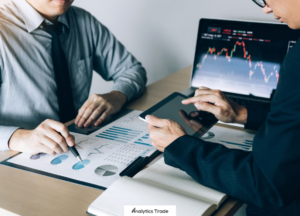Understanding the Market
Forex trading, also known as foreign exchange trading, is the buying and selling of currencies on the global market. It’s a highly lucrative and exciting market that offers traders the opportunity to make profits by buying and selling currency pairs. One of the most popular currency pairs is the pound dollar, or GBP USD, which is the exchange rate between the British pound and the US dollar. In this article, we’ll take a closer look at forex trading and explore how it works, including its rates, and how traders view the market.
What is Forex Trading?
Forex trading is a 24/5 market, meaning it’s open for trading 24 hours a day, five days a week. This is because it’s a global market, and as the sun sets in one part of the world, it rises in another. Forex trading is also highly liquid, meaning there’s a large volume of trades taking place at any given time. This liquidity makes it easier for traders to enter and exit positions, which can lead to increased profits and reduced losses.
Understanding Forex Rates: How Traders Use Exchange Rates to Optimize Trading
When trading forex, traders are always looking for the best exchange rates. The forex rates, also known as the exchange rates, are the prices at which one currency can be exchanged for another. These rates fluctuate constantly based on a variety of factors, including economic data, political events, and market sentiment. Traders use these rates to determine the best times to enter and exit trades, as well as to manage their risk.
Unpacking the GBP USD: Understanding the Drivers of this Popular Currency Pair
One popular currency pair that traders often focus on is the pound dollar, or GBP USD. This currency pair represents the exchange rate between the British pound and the US dollar. It’s a popular pair because both currencies are widely traded and because it’s heavily influenced by economic events in both countries. For example, if there’s positive economic data released in the UK, the pound may appreciate against the dollar, and vice versa.
The Trader’s Toolbox: Understanding Technical and Fundamental Analysis
When traders view the market, they’re often looking for patterns and trends that can help them make informed decisions. One tool that traders use is called technical analysis, which involves studying charts and other data to identify patterns that can be used to predict future price movements. Another tool that traders use is fundamental analysis, which involves analyzing economic data and news events to determine the impact they’ll have on the market.
Balancing Risk and Reward: How to Succeed in the Forex Market
Forex trading can be a highly lucrative and exciting activity, but it’s important to remember that it’s also risky. Traders should always have a solid understanding of the market and the currency risks involved before entering any trades. It’s also important to have a trading plan in place that includes risk management strategies to help minimize potential losses.
In conclusion, forex trading is a highly liquid and exciting market that offers traders the opportunity to make profits by buying and selling currency pairs. One of the most popular currency pairs is the pound dollar, or GBP USD, which is the exchange rate between the British pound and the US dollar. When trading forex, traders are always looking for the best exchange rates, which fluctuate constantly based on a variety of factors. Traders use tools like technical and fundamental analysis to view the market and make informed decisions. While forex trading can be lucrative, it’s important to remember that it’s also risky, and traders should always have a solid understanding of the market and the risks involved.
8 Most Frequently Asked Questions about Forex Trading
- 1. What is forex trading?
- Forex trading, or foreign exchange trading, is the buying and selling of currencies on the global market. It involves trading currency pairs, such as the British pound and the US dollar (GBP/USD), to profit from the fluctuations in exchange rates.
- 2. How does forex trading work?
- Forex trading works by speculating on the future price movements of currency pairs. Traders buy a currency pair if they believe the base currency will strengthen against the quote currency, and sell if they think the base currency will weaken.
- 3. What are the forex market hours?
- The forex market operates 24 hours a day, five days a week, as trading takes place across various time zones around the world. The market opens on Sunday at 5 PM EST and closes on Friday at 5 PM EST.
- 4. Can anyone trade forex?
- Yes, anyone can trade forex, as long as they have access to a computer or a smartphone with internet access and a forex trading account with a broker. However, it’s essential to learn the basics and develop a trading strategy before risking real money.
- 5. What is a currency pair?
- A currency pair consists of two currencies: the base currency and the quote currency. The exchange rate represents the value of the base currency in terms of the quote currency. For example, in the GBP/USD pair, the GBP is the base currency, and the USD is the quote currency.
- 6. What are the major currency pairs?
- The major currency pairs are the most traded and liquid currency pairs in the forex market, which include the US dollar (USD) paired with other major currencies like the euro (EUR), British pound (GBP), Japanese yen (JPY), Swiss franc (CHF), Canadian dollar (CAD), Australian dollar (AUD), and New Zealand dollar (NZD).
- 7. What factors influence currency exchange rates?
- Currency exchange rates are influenced by various factors, including economic data releases, geopolitical events, central bank policies, interest rates, inflation rates, and market sentiment.
- 8. What is leverage in forex trading?
- Leverage in forex trading allows traders to control larger positions with a smaller amount of capital. It’s expressed as a ratio, such as 50:1, which means that a trader can control a $50,000 position with just $1,000 in their account. Leverage can magnify both profits and losses, so it
Happy Trading all 🙂










Comments